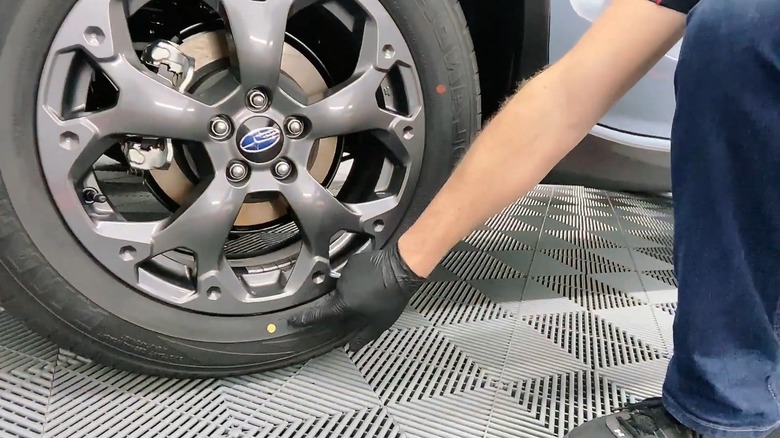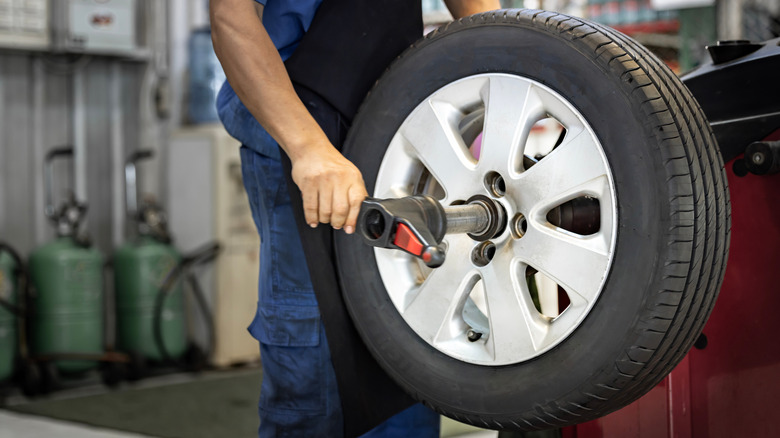What You Should Know About Those Red And Yellow Dots On Your Tires
Getting new tires is a regular part of keeping your vehicle maintained, especially if you want a smooth ride. When you see a new set for the first time, though, you might notice some unfamiliar markings: red and yellow dots. These don't indicate that the tires have a defect or are on sale for some reason like you might think. Instead, these dots tell the mechanic where to line up the tires on the wheels for the best balance.
Like many things made from rubber, tires don't emerge from the molding process in perfect form. Because of that, tire manufacturers identify the imperfections and apply yellow and red dots of paint as installation guides for mechanics. There are a couple different versions of this process (called match mounting), and in one, a yellow dot is placed at the lightest point on each tire sidewall, which is then aligned with the heaviest point on the wheel — the valve stem. This placement creates a natural balance, reducing how many weights the mechanic has to attach to the wheel to achieve the perfect balance. As a result, the tire will last longer, and your ride will be more comfortable.
There aren't always red dots on new tires, but when there are, they're more important than the yellows. That's because tires have low and high spots, joints in the carcass (framework) and inner liner — all of which affect how the tire flexes while it's going down the road. When there's a red dot on the outside of the tire, it indicates the lowest point in the rubber when it's flat. It should be lined up with the highest point of the wheel, which is indicated with a colored drill notch or sticker, or with the valve stem.
The process for balancing tires
Your tires may not be the part of your car that protects you from lightning (it's actually the frame), but they are one of the most important parts to maintain for optimal vehicle safety. For instance, imbalanced tires don't directly affect the wheel and axle function of your vehicle, but they can negatively affect your vehicle's fuel efficiency, ride quality, and ability to stop. Lining up the tires on the rims based on the yellow and red dots is only the beginning of ensuring that they're balanced.
The second part of balancing tires involves putting the assembled tire and wheel onto specially calibrated equipment. As the tire balancing machine spins the assembly at a high speed, it measures for the heaviest point. The machine also indicates the ideal point on the wheel lip contours for the technician to place counterweights, compensating for the heavy spot and bringing the whole assembly into balance. If your wheels don't have lip contours, the mechanic will adhere weights behind the face of the wheel instead. And, if the imbalance is too significant, the technician may need to reposition the tire for the best results.
While most people only get their tires balanced when they replace them, this process can be performed on used tires as well, especially since tires can become unbalanced. In fact, you may consider rebalancing your tires if you notice the floorboard, seat, or wheel vibrating while you drive. That's because ignoring these vibrations could create unsafe handling conditions. To prevent that problem from developing at all, some garages recommend tire rebalancing every 5,000 to 6,000 miles.

